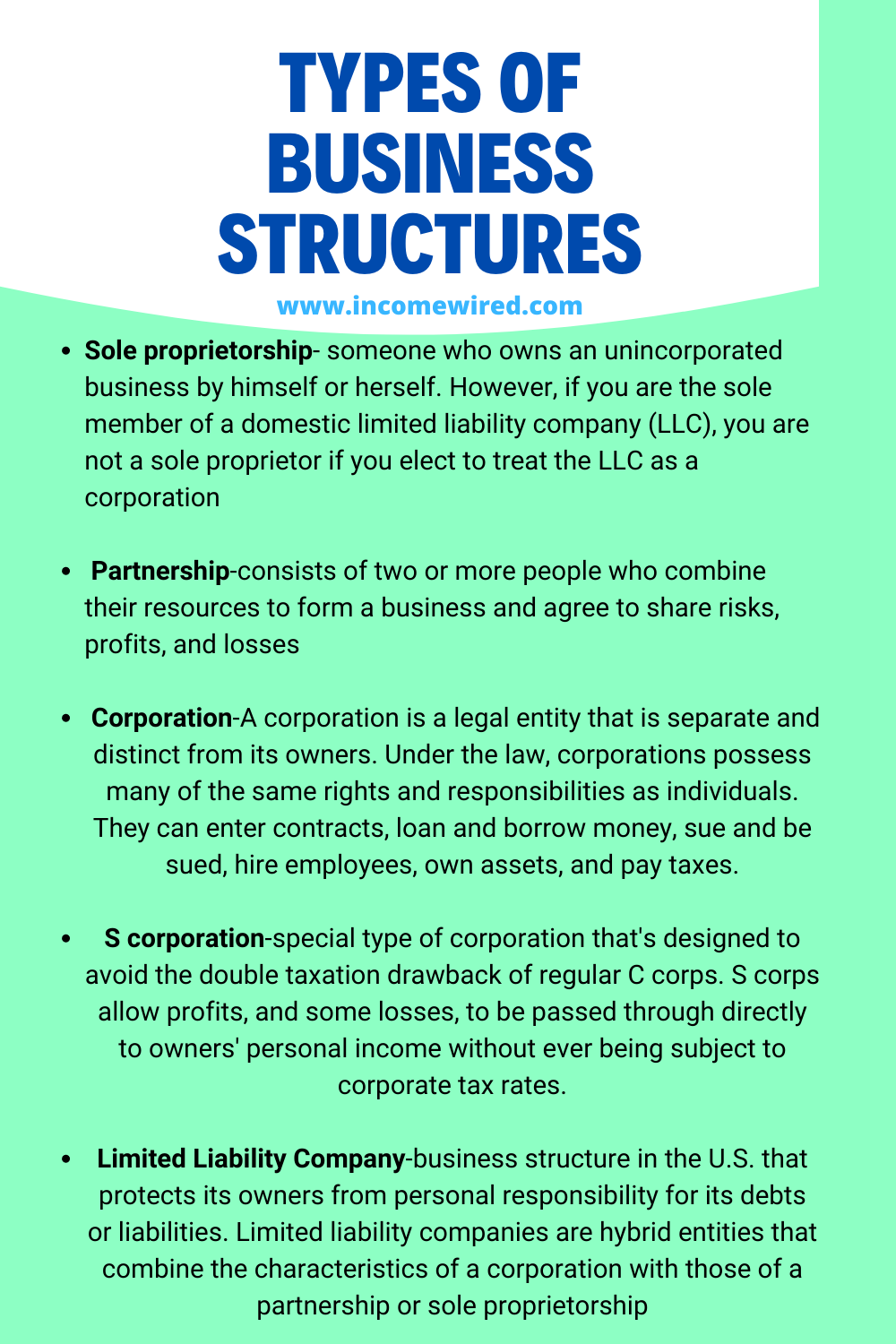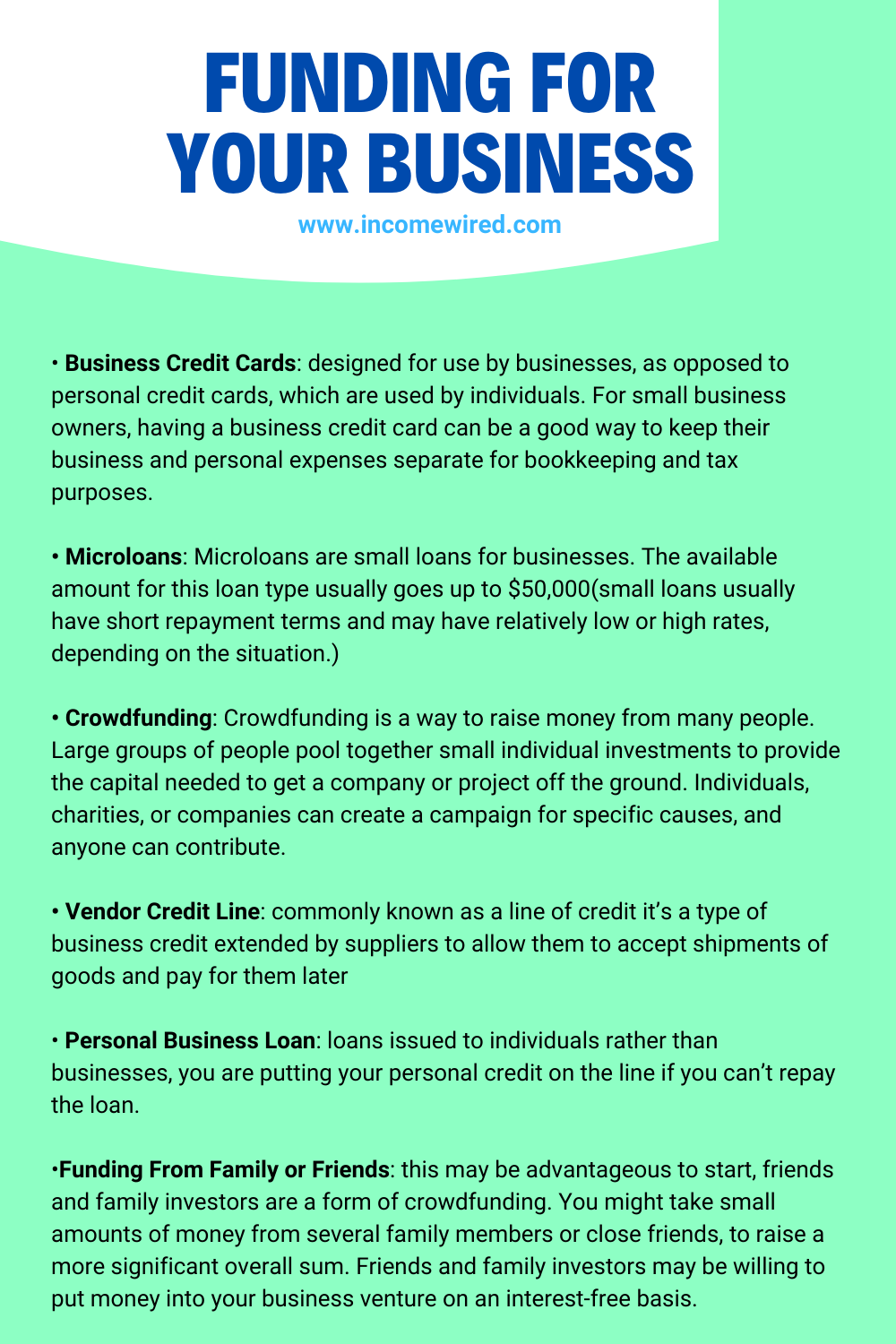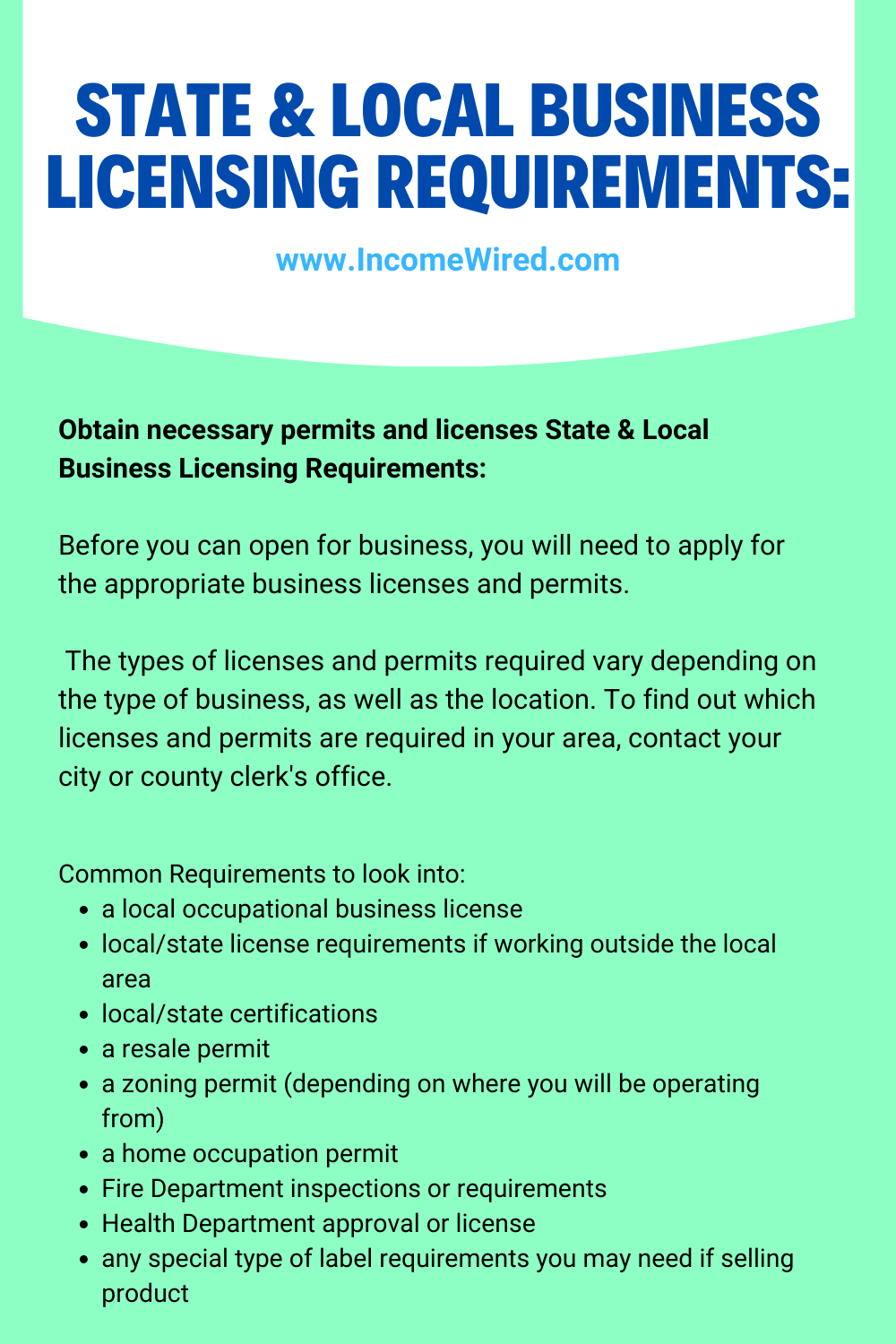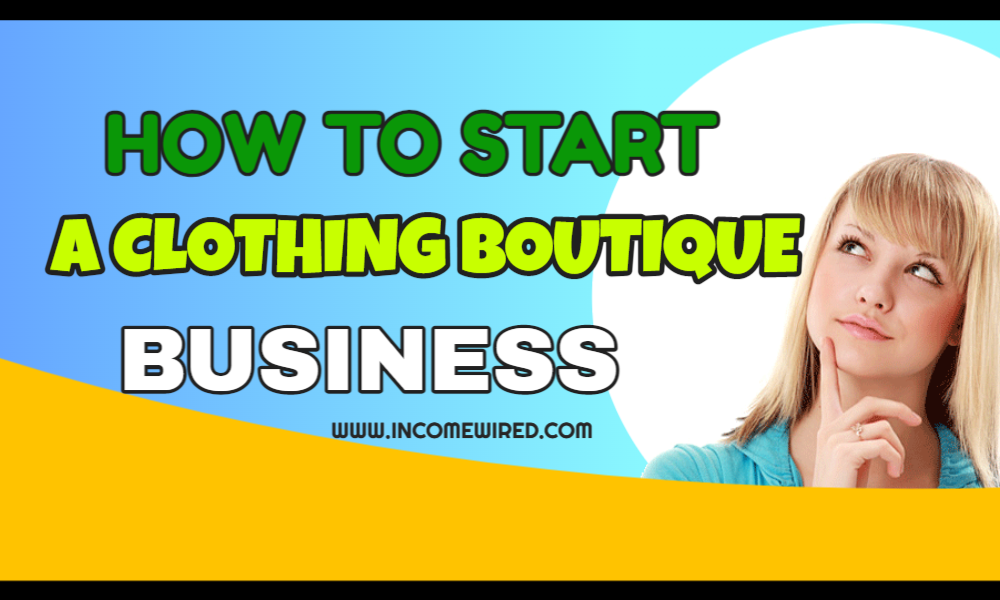we help service-based business owners, freelancers, and aspiring businesses with our content & services & When readers purchase services discussed on our site, we often earn affiliate commissions that support our work. Find out more about Income Wired
What is a Clothing Boutique Business?
A clothing boutique business is undoubtedly the best option for you if you’re thinking about starting a venture that can bring you potential earnings and recognition.
A clothing boutique business is a store that specializes in selling clothes, accessories, and footwear. Unlike department stores, which sell a variety of items, boutiques typically focus on a specific type of clothing or style. You get clothes at the possible minimum prices and sell them with a good profit margin.
Why start a Clothing Boutique Business?
A boutique business could be your golden chance to earn greater revenue with considerable effort. If you have an appropriate fashion sense and know the fashion industry trends then you can consider this business option right for you. If you still want to give a second thought about this business then the boutique market analysis will be enough to convince you to start this business.
Boutique Market Analysis
- Global market size: 22.4 billion in 2022
- Projected Annual Growth Rate: 7.7% in 2022
- Key Players in Boutique Market-no companies with more than 5% market share.
Source: IBIS World, Investopedia
Clothing Boutique Start-up Analysis
- Production equipment – $50,000 to $150,000
- Supplies – Unisex clothing line, Kids collection, Men wear, Women’s wear, ethnic wear
- Insurance and legal fees – vary
- Permits and licenses for the business – $ 300 to $2000
- Business software – $10 to $250
- Small business insurance – $100 to $200
Disclaimer: These costs may vary, depending on location, competition, supplies, sources, market share & your personal decisions, but they do offer a good idea of what you will spend to start. Our Data are purely informational and should not be taken as legal or financial advice.
Start a Boutique Business in these 11 steps:
- Creating a Clothing Boutique Business Plan
- Legalize Your Clothing Boutique Business
- Setup Your Clothing Boutique business for Taxes
- Setting Up Your Clothing Boutique Business Bank Account & Exploring Funding for Your Business
- Clothing Boutique Business Accounting & Invoicing Setup
- Acquire the necessary permits & licenses for your Clothing Boutique business
- Get Required Clothing Boutique Business Insurance
- Grow your Clothing Boutique Business brand: Helpful Tips
- Create an Online Clothing Boutique Business Presence
- Getting Leads & Calls for Your Clothing Boutique Business
- Get to know Your Clothing Boutique Business, Research local competition
Step 1. Creating a Clothing Boutique Business Plan
A business plan is a first and most important step in starting any business. It serves as a blueprint of the business which specifies the mission and vision of a business. A strategic tool to achieve short-term and long-term objectives. Identifies the customers and competition in the market. It is also important for attracting investors because they get an insight into the business through a properly crafted business plan. Determines the financial expenses. It helps to understand the potential and weaknesses of your business. It shapes the future of the business.
A business plan helps you to make the right decisions due to the acknowledgment of necessary information. Moreover, the business plan ensures getting funding for the startup of the business. If you fail to craft a proper business plan then certainly, you’re planning to fail.
Essentials of what a boutique business plan contains are:
- Executive summary of the overall business
- General description of the company
- Introduction
- Organizational structure
- Market research and competitor analysis
- Description of your products and/or services
- How you plan to market and sell your products
- Financial projections and funding plans
- Sales & Marketing Strategies
- Roadmap for your business
- Projected growth based on your business plan
- appendix
What are the costs involved in opening a boutique business?
A boutique start-up requires a lot of capital. But many variables affect how much it will actually cost to open a boutique. The variables that determine the costs are geographic location, size of the store, product, and services. You require $50,000 to $150,000 to start a small-scale boutique business. If you want to start a medium-scale boutique business, then you will need at least $750,000.
The estimated cost breakdown for a medium-scale boutique business is following:
| Business Registration fee in the USA | $750 | Marketing and grand opening promotion | $3580 |
| Permit and license expenses | $15,300 | Leasing a store facility in a central location | $200,000 |
| Business Consultant | $2500 | Insurance cost | $30,400 |
| Store renovation | $6500 | Stationery, phone, utility | $6500 |
| Operational cost for the first 3 months | $60,000 | Startup inventory | $200,000 |
| Store equipment | $13,750 | Furniture & Gadgets | $14,000 |
| Purchase & install CCTVs | $5000 | Website Hosting | $600 |
| Miscellaneous | $5000 | Opening party | $8000 |
Common boutique supplies required:
- Clothing racks ($13 – $297)
- Boutique costumers ($33 – $48)
- Mannequin ($200 – $1000)
- Boutique hangers $1 – $66
- Jewelry display $0.99 – $27
- Boutique Etageres $207 – $287
- Boutique ottomans $69 – $71
- Shopping bags $17 – $84
- Boutique signs $1.02 – $11.7
- Floor length mirrors $80 – $200
- Store price tags $8 – $13
- Window dressing materials which include lighting, color theme, decorations
Equipment needed for your Boutique business:
- Point of sale system (POS) software $10–250
- POS Hardware
- Card reader: $20–50
- Tablet stand: $50–200
- Barcode scanner: $30–100
- Receipt printer: $35–150
- Till and cash drawer: $5–200
- Touchscreen: $250–800
- Digital menu board: $200–2,000
- Kiosk: $200–700
- Cash Register $100 – $2000
- Security Cameras $2000
- Computer $300 – $1000
- Wi-Fi connection $ 34.99 – $500 per month
- Stereo system $1500 – $2500
- Virtual Telephone (varies as per the services)
Other costs required
Packaging
Packaging costs will be determined by your choice of corrugated boxes, padded mailers, bags, and envelopes. Moreover, your customized packaging box or envelopes can be served as branding for your business. Because according to a survey, 40% of customers post unboxing videos on social media. You will also need tape, packaging slips, and fillers in case of delicate accessories.
Shipping
Shipping is determined by the dimension, weight, destination, delivery time, and unexpected problems. Furthermore, shipping costs will include the charges of the carrier company as well.
The retail price of a small package could be $8 to $12. For the large package, it could be $17 to $21.
You can get the estimate of shipping by using the shipping calculator of major three carriers in the U.S. which are following
Insurance
The average Insurance cost for business liability insurance is $250 to $450 per year. The minimum cost for a business owner’s policy is $500.
Permits
Permits cost on average can range from $300 to $2000. It could vary as per the location. Moreover, a permit fee calculator can help to better estimate the costs.
Web Design
Web Design can cost you a great deal. Roughly it can cost you $4000 to $10,000 on a low-scale design. But for high-quality web design, can cost you 32,500. You can check prices on various online website design calculators like Web FX.
| Disclaimer: These costs may vary, depending on location, competition, supplies, sources, market share & your personal decisions, but they do offer a good idea of what you will spend to start. Our Data are purely informational and should not be taken as legal or financial advice. |
What are the ongoing expenses for a boutique business?
Apart from the startup cost, you cannot overlook the ongoing expenses that will keep popping up in your business. The most obvious ongoing expenses for your boutique business are rent and utility, supplies and equipment, salaries, fixtures, marketing, and promotion.
If you don’t already have a location for your boutique business, you will undoubtedly need to rent one. It is a significant monthly operating expense that you will have. The next operating expense that you will have to pay, irrespective of your profit, is the electricity bill. As the supplies and equipment are not one-time purchases. You will need to keep replacing and updating them as per your boutique’s need.
Another ongoing cost that may show up every week or month is equipment maintenance. As they are liable for defects and damage. You will need to keep maintaining them to not compromise on your quality services. You cannot handle a boutique business single-handedly. Also, you will need employees either part-time or full-time. So, another ongoing expense of running your business is salaries.
For your boutique business, you will need fixture expenses that will include signage, paneling, table stands, shelves, lighting, storage cabinets, showcases, and other materials for product display. Marketing and promotion are not one-time expenses. A significant portion of your operating costs will go toward product promotion if you want to grow your business.
Who is your target market?
Without knowing your target market, you cannot launch your boutique business. You can identify your target market and audience by carrying out social engagement and surveys that specifies the buyers and their choices, interest, and age. Google Analytics can help to identify your target audience on the online platform.
You can learn things like how your audience approaches your website online and what their preferences and product interests are. You can also determine the target audience by the industry trends. Moreover, you can focus on your product’s unique value while keeping an eye out for trends for similar products to see where they are investing their resources.
Market research can help you identify the weakness in the services of competitors and the potential that your services can provide to the target audience. Analyzing the competitors can help you understand how they are running their businesses. Who is their target audience and what are their ways to meet and exceed their customers’ satisfaction?
How does a clothing boutique business make money?
The clothing boutique business makes money by selling clothes or accessories to customers. In this business, you have to either purchase or manufacture clothes and accessories. If you cannot afford the manufacturing setup of a boutique, then you can purchase the clothes and accessories at a wholesale rate. It involves purchasing the product as cheaply as possible and selling it at a markup price to gain a profit. Furthermore, a boutique business can make potential revenue by providing online services as well. The business can also earn greater revenue by collaborating with other businesses.
How much can you charge customers?
The costs that you can charge customers depend on the price of buying the products, the cost of outsourcing, and the level of competition, that is why it’s important to create a business plan, this will ensure you plan ahead for most expenses.
The knowledge of competition in your target market matters for pricing the product. You cannot randomly start pricing the clothes. A useful strategy for figuring out your own prices is to conduct research into the products and retail prices of your competitors. It will only provide you with a retail price point, not an actual markup formula, as you won’t be aware of their wholesale costs or operating costs.
It is also suggested to start with lower markup at the start of your business to grab the customers’ attention which will generate more profit. For boutiques, the markup is considerably 55 – 60 percent, this will help pay for all the expenses you will have.
Formula to calculate markup by percentage
Selling price = [(Cost) ÷ (100 – percentage markup)] × 100.
For example, if you want to sell a silk shirt that you get for $80 at a 60 percent markup, you can estimate the charges by the following formula
Selling price = [(80) ÷ (100 – 60)] × 100
= [(80) ÷ (40)] × 100
= 200
So, the cost you will charge to the customer for a silk shirt is $200.
One way to determine how much to charge for your clients is to do a cost analysis. A cost analysis considers all the costs associated with making and selling a product or service. This includes things like the cost of materials, labor, overhead, shipping, and marketing. Once you have all this information, you can determine what your price should be to make a profit.
The right amount of markup and cost analysis information can make charging estimates easier for the business. For your new business, you should research the competitor prices. If you are wondering, how? You can use these platforms to carry out the research.
How much profit can a boutique business make?
There is a lot of potential for this business to make money. According to Margins by Sector (US). The gross profit margin for boutique businesses is 53% and the net profit margin is 7%. By 2024, the online retail market for clothing and accessories is expected to bring in more than $153 billion, according to Statista. In a cosmopolitan city, a boutique can typically earn between $120,000 and $550,000 per year if it is situated in a location with high pedestrian and vehicular traffic.
How can you make your boutique business more profitable?
You can make more profit in your boutique business
- expanding your customer base. You can expand it by offering a free newsletter and asking for opinions from the customers.
- keeping up and maintaining excellent customer support service
- keeping your website content fresh
- promoting your business on social media networks
- collaborating with other businesses
- identifying the new opportunities that will show your innovative ideas
- seeking referrals which include sending emails addressing the name of clients
- asking clients about their contact information and add them to your list for sending messages to keep them updated about your products
- launching a user-friendly website for your business
- adding a variety of quality products to your business
What will you name your business?
A business name is important for creating a massive influence on customers and other businesses. It depicts the essence and creation of your business. The business name gives recognition to the business in the marketplace. One cannot overlook the need for branding. The fact that your business name will appear on all of your products, packaging, tags, billboards, and signage makes it a branding tool.
An easy and catchy name will also aid to boost sales. Considering that people will remember your name and spread the word about their positive experiences with your high-quality products. Only a strong business name gives the business a prestigious place in the industry and helps to achieve all the milestones.
Step 2. Legalize your Clothing Boutique Business
Legalizing your boutique business is necessary for success of the business. Introducing your boutique as a business entity can ensure your protection from liabilities. There is a various business structure that ensures keeping business and personal assets aside.
The right business entity can aid in saving taxes depending on the profit, size, and costs of the business. For some business entities, it is necessary to implement provisions that address internal management. These clauses give the business entity structure and shield owners from disagreements.
Moreover, a professional image in the marketplace is provided by going legal with your business. The kind of business entity a person chooses affects almost all facets of how business functions, so those who are thinking about starting a business should carefully weigh all of their options.


Step 3. Setup your Clothing Boutique business for Taxes
For operating your boutique business, you will need to register for taxes which include federal and state taxes. For the registration process, you will need EIN. An EIN keeps the track of business finances and separates them from personal finances.
It is not wise to use your social security number for business because it can be susceptible to identity theft. For this purpose, EIN is the best option for the business which keeps the SSN for personal use. An EIN makes tax payment a lot easier by separating the business and personal taxes. EIN is also required for opening a business bank account.
In order to get an EIN, you need to determine your eligibility which includes that your business should be based in the U.S. or its territories. Also, you must have a valid taxpayer identification number such as a social security number.
If you want to apply and get further information, click here.
Step 4. Setting Up Your Boutique Business Bank Account & Exploring Funding for Your Business
Setting up your business bank account is a necessary step for a new venture. It is not a good idea to combine your personal and business accounts because doing so puts your personal assets at risk in the event that your business is sued. A business account can make tax filing smooth. It is necessary to have a business bank account to keep the track of your finances.
Payroll services and excellent banking products like business checks are available through business bank accounts, making it simple to pay employees. Customers also get a sense of professionalism from it.
Along with your business bank account, a business credit card is also an essential entity. Since business credit cards typically offer a larger credit limit than personal cards, you can purchase the items your boutique business requires. You will not like the idea of an employee using your personal credit card for business expenses.
A business credit card is a remedy for this problem.
Your business employee will use the credit card and you will get a single bill of monthly expenses. Business credit cards give the liberty of setting a limit on your card usage. Besides, business credit cards give cash back or points in their reward programs. You will earn points for rewards each time you use the card.
Most Common Types of Funding to start your Boutique Business


Step 5. Boutique Business Accounting & Invoicing Setup
It’s crucial to keep an accounting when starting a new business. You won’t want to overlook any information pertaining to your business. You could face serious issues even if you make a small error. What’s more, the pen-paper technique for keeping records is obsolete. It is a time-consuming process. For modern problems, you will require a modern solution. You can use Quickbook to track your finances and keep your accounting up to date.
Invoicing:
When Invoicing, you may want to consider Markate, it is a software that lets you create, estimates, work orders & invoices
Markate– a software that helps you manage everyday business activities, e.g., estimates, work orders, invoices & even scheduling
Step 6. Acquire the necessary permits & licenses for your boutique business


Step 7. Get Required Business Insurance
Business insurance is necessary to assist in paying for the expenses connected with liability and property damage claims. If business owner doesn’t have business insurance, they may be forced to cover high-cost losses and legal fees brought against their business out of their pocket.
There are many types of business insurance policies available, so it is important to speak with an insurance agent to determine which type of coverage is right for your business.
some common types of business insurance include:
- general liability insurance
- product liability insurance
- property damage insurance
- business interruption insurance
- worker’s compensation insurance
Get a Free Quote Here
Step 8. Grow your Clothing Boutique Business brand: Helpful Tips
You’re mistaken if you believe that customers will keep coming to your store. You must expand your company to generate more potential revenue and attract more customers. With only a minimal level of recognition, a business cannot compete. As this market is saturated it needs to grow and mark its recognition for long-term success.
How to promote your clothing boutique business?
- attractive store displays to grab the attention of passersby
- marketing
- paid advertisements
- by a well-defined website
- social media accounts
- customizing shopping bags with your brand name and logo
- installing billboards of your brand in various places
- customizing the price tags with your name and logo
How to retain your clothing boutique clients
- providing special promotion offers
- giving flat or up-to-sale options
- setting up a reward system
- registering their numbers or emails to keep updated about what’s new in your store
- implementing the customer feedback loop to improve the services as per the customers’ demand
- quickly addressing customers’ issues and resolving them in no time
Step 9. Create an online Clothing Boutique business presence
Your boutique’s online presence ensures a wider customer reach. An online website gives credibility to your business more than a social media page. 84% of customers prefer to shop from the website of the boutique than from their social media page. You can offer your services via your website to people who cannot access your physical store.
Furthermore, all legitimate businesses either small or big have websites.
1.37 percent of clothing website visits turn into a purchase. This signifies that only a user-friendly website can ensure the visit to purchase.
Social media handles can boost the reach of your business but the website ensures the revenue.
For creating a website you need to choose web hosting. Bluehost is recommended for web hosting because of its remarkable features. Its support base is available 24/7 irrespective of time zone. Bluehost is a trustable hosting provider kudos to its responsive customer service, high uptime, and cost-effective beginner plans.
Create a social media account
Social media has become a part and parcel of life. The users spend 2 hours and 25 minutes on social media every single day. It is a golden opportunity for your boutique business to mark a social media presence. You can gain followers through your remarkable and distinguished products. The popular social media handles are
You can create a business page on Facebook and a business account on Instagram for your boutique business free of cost.
Create a YouTube channel
In terms of video marketing for boutique businesses, YouTube can be useful. YouTube has 2 billion users worldwide which drives 30 million visits daily. Only 9% of U.S small businesses use YouTube channels for promoting their business which signifies that you have an opportunity to utilize it. The best way to demonstrate products, and services and get a lead is made possible through YouTube videos for business. Through YouTube videos, you can direct people to link back to your official website. Moreover, you can use your channel to boost your target audience. You can ask your followers on your social media handle to subscribe to your channel to stay updated.
Get Online Reviews
Before making a purchase either in a physical or online store customers prefer to read the positive feedback of the business. Your positive reviews and five-star rating can ensure the visit into a purchase. You can maintain online reviews on Facebook. You can get online reviews by listing your boutique business on Google and Yelp. If you will provide the best quality product then customers will leave a positive review with a five-star rating on your website as well. It will give credibility to customers to trust your products.
Step 10. Getting Leads & Calls For Your Clothing Boutique Business
You can get leads and calls for your boutique business by following ways.
You can get leads and calls by adding a contact number and business email id on your website. Additionally, you can list your number in local and online directories as well.
Business Cards
Create business cards because it crafts the first impression of your business on the customer. It also serves as an official representative for your business. It provides crucial contact details like name, title, email, website, address, and phone number.
Flyers
Create flyers to get leads for your business. They help small businesses attract more customers. With the aid of flyers, you can establish a favorable first impression, strike up a conversation with fresh prospects, and inform potential clients of your products and services. They pass your contact information to the customers which might like to stay in touch with you. They can increase sales by 1.25%, according to studies.
Word of mouth
Word of mouth is a free marketing tool that helps to get leads in your business. 23%. Word-of-mouth generates $6 trillion in annual global spending on average and accounts for 13% of all sales. You can get leads by word of mouth if you will provide an impressive first experience and quality products to the customer.
Network
Network with other companies or people to get more leads. For your boutique business, you can network with social media influencers to attract the customers’ interest, if you cannot afford to connect with celebrities then bloggers and influencers are the best options for you.
Separate Your Clothing Boutique Business Phone from your Personal Phone
At the start of your business, you will like to share your personal contact number with the customers or even on your website. But later you will feel hectic and burdened to keep receiving anonymous calls. Moreover, sharing your personal contact number does not sound professional. It invades your personal space and privacy.
A separate business phone is a convenient way to stay in touch with your customers and suppliers with a variety of features. You cannot get the business phone features for your business growth on your personal phone.
Modern technology, such as virtual phone numbers, is revolutionizing the way to conduct business. Virtual phone numbers have extra value and advantages while still having the same outlook as regular phone numbers. Through a virtual phone, you can receive and make a call through the cloud and internet on your mobile phone, desktop app, or desk phone. It gives the flexibility of directing the call to a specific individual. It provides leverage of not missing the calls due to the setup it offers, which causes all business phones to ring simultaneously and allow calls to be answered.
The main advantage of using a separate business phone is that your business number expands along with the growth of your business.
Step 11. Get to know Your Clothing Boutique Business, Research local competition
Education in Your Boutique Business is key, learn the market and trends
Market research is the key to your boutique business. Research the market saturation in your target area. Locate a perfect place for your boutique. Dig out your strengths, opportunities, weaknesses, and hindrances for your business’ success.
The knowledge of local trends is necessary for the base of business. Local trend determines the shift and change in dynamics from the customer’s perspective. For example, local trends determine which social media handle is more common among customers for your boutique business. Local trends also identify what kind of clothing line is more common among customers. It determines their preferences and choices. With this knowledge, you can be sure of long-term business success.
Getting to know your local area and competitors
The knowledge of your local area and competitors gives enlightenment about how you will run your business. You can set the product prices by comparing them with competitors. Local area knowledge can help you to know what products and services you should consider in the boutique business.
Network with other Businesses
If you want to expand your business you will need to network with other businesses. This ensures getting more investors, services, and business partners. You get new acquaintances for the prosperity of the business. For your boutique business, you can network with social media influencers and collaborate with other designers.
Seasonal Vs Year-Long Business- What’s Right for Your Boutique Business?
In general, a boutique business operates throughout the entire year. If you open a store selling fancy, formal, or casual clothing, you will update your inventory as the seasons change.
Is Starting a Boutique Business Right For You?
Starting a boutique business is absolutely right for you. It is a potential market for generating great revenue with an ideal profit margin. According to the IBIS World report, the market size which is measured by the revenue is $22.4 billion in 2022 with a growth rate of 7.7%. These stats show the potential of a boutique business to grow further in the coming years. Moreover, clothes are a basic necessity of life which never go out of demand.
Tips for Your Boutique Business Success
Always stay on top of your Business and do not lose focus because the boutique business only prospers if you are willing to give your innovative ideas and introduce alluring products to the customers.
Finding a niche market In your Boutique Business is necessary to grab the customers’ attention. Furthermore, the boutique has a vast variety of niche markets that you cannot introduce at the beginning of your startup at once. When your boutique business becomes sufficiently established, you will be able to focus on various niches.
Learn to Delegate because you’ll initially think you’re capable of managing and running the company efficiently but as the business will grow, you will feel insufficient. Ultimately, you will need someone’s assistance to control your business setup. So, for your own sanity and the growth of the business, you will have to learn to trust, value, and consider others’ help.
Be patient because if you are planning to run even a small-scale business it will take time to establish and leave its recognition mark in the market. Eventually, with your patience, you will be able to earn the desired output from your business.
Frequently Asked Boutique Business Questions:
Does providing online boutique services require a permit or license?
If you have a registered business entity for the store then you do not need any permit for online services.
What are the factors that determine the clientele in the boutique industry?
- Ages you try to sell to
- type of clothing you sell
- target audience
- Gender
- Location
How many pieces of clothing must be provided for a complete line?
12 pieces per look if you have a low budget.
What skills and experience help to establish a successful boutique business?
- Strong marketing abilities
- A keen eye for details
- Outstanding interpersonal and communication skills
- A sound understanding of the industry
- A spirit of competition
How do you get influencers to showcase your products?
Bring in captivating products, approach influencers, and negotiate with them.
What you can do to inventory which isn’t selling?
Either you put them on a flash sale or gift them on purchase.
what other products you can add to your boutique business?
Bags, footwear, men’s and women’s accessories.



